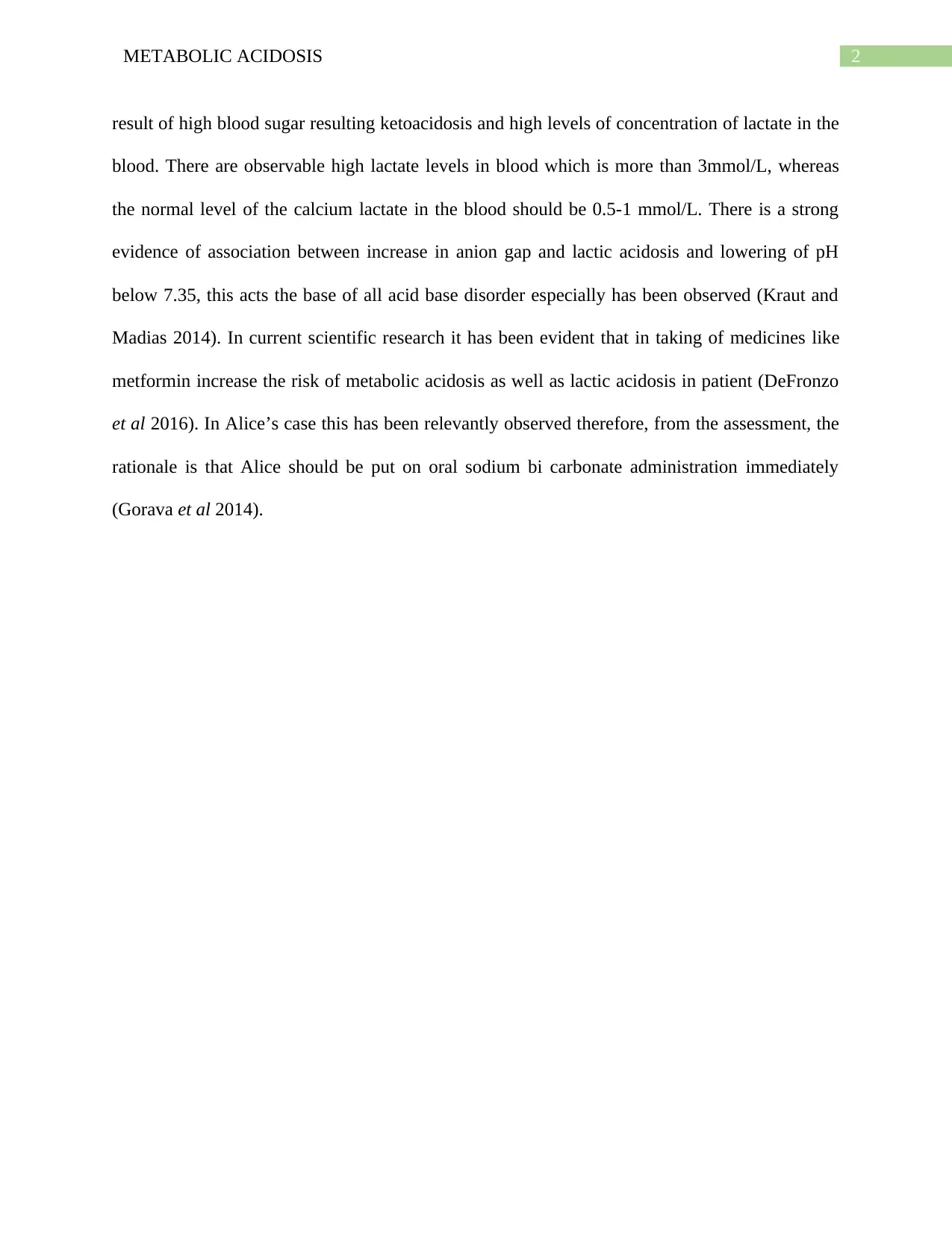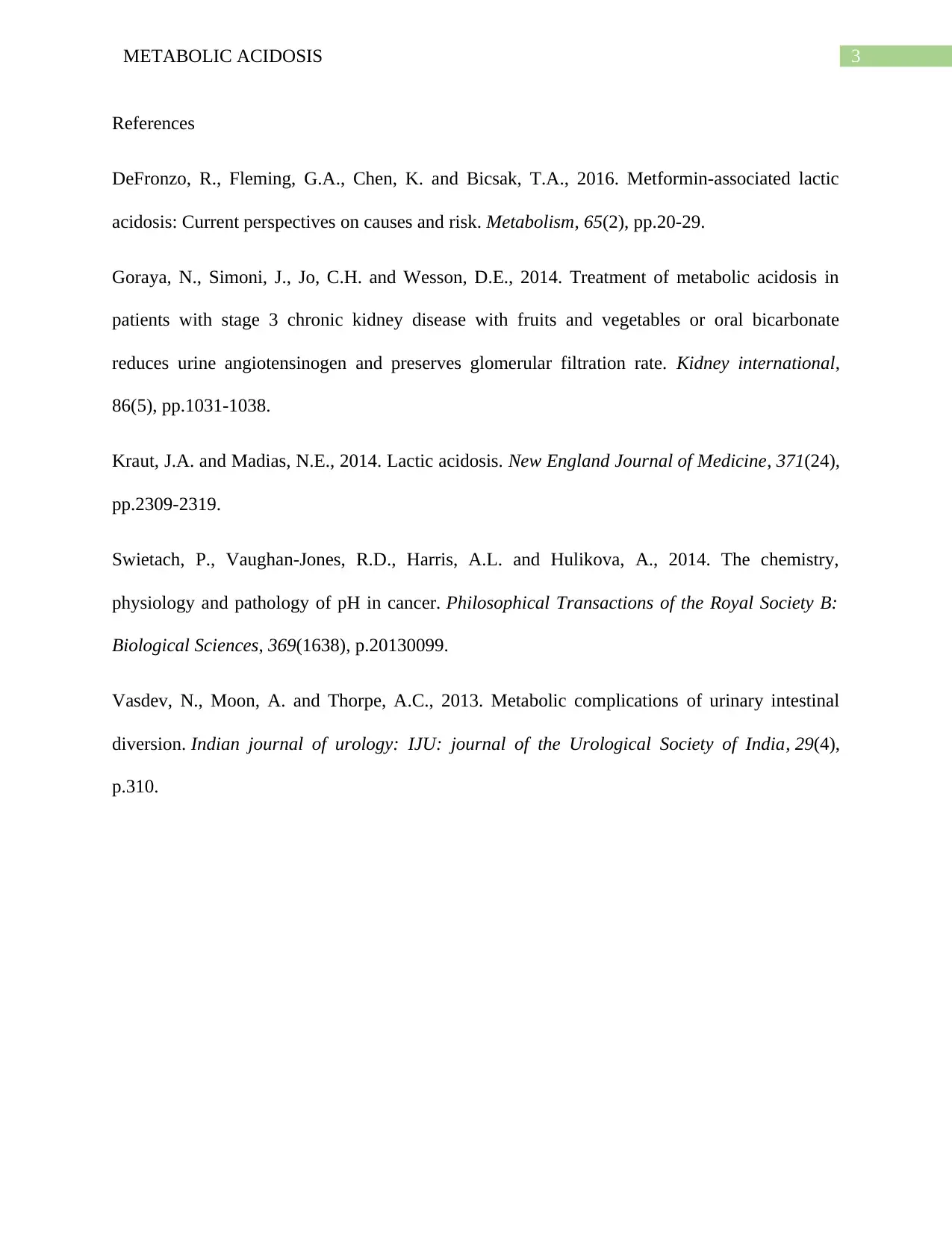University Case Study: Metabolic Acidosis Diagnosis and Treatment Plan
VerifiedAdded on 2023/01/19
|4
|834
|32
Case Study
AI Summary
This case study focuses on a 74-year-old woman named Alisa, admitted with hyponatremia and suspected metabolic acidosis. The analysis examines her blood pH (7.3), HCO3- levels (19.4), PaCO2 (21), and serum ion gap (27.6 mEq/L), indicating a high probability of metabolic acidosis. The study highlights the role of the respiratory and renal systems in maintaining pH balance and discusses the significance of arterial blood gas analysis. It identifies potential causes like high lactate levels and medication use (metformin), leading to a diagnosis of metabolic acidosis. The rationale for treatment involves immediate oral sodium bicarbonate administration, supported by references to relevant scientific literature. The case underscores the importance of understanding metabolic acidosis and its management through a comprehensive assessment of patient data and evidence-based treatment strategies.
1 out of 4










![[object Object]](/_next/static/media/star-bottom.7253800d.svg)